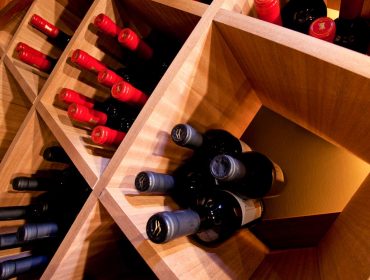 A reader recently asked, “What is the proper way to store wine that you intend to hold for some time?”
A reader recently asked, “What is the proper way to store wine that you intend to hold for some time?”
Right after moving from Bremerton to Silverdale in 1998, another reader emailed me and asked if I knew anyone who was interested in a 50-bottle wine cooler he wanted to sell. My wife, Kathy, and I drove to his house, checked out the cooler, bought it and brought it home. We soon discovered it would hold only 45 bottles.
In Bremerton, we had a nice, big, cool basement, so I had made a wood cabinet that held about 130 bottles. Our current Silverdale home is single-story, with a 30-inch crawl space, and room for wine is considerably reduced. I gave our kids the homemade cabinet and stored the wine in the crawl space.
The grandkids had a ball crawling around under the house searching for wine for me. However, when I had to crawl around myself searching for wine for dinner or a party, I soon discovered that was not my cup of tea (or should I say glass of wine).
The wine collection had been growing steadily but I put off getting a bigger refrigerated cabinet because of the expense. Costco had a simple metal wine rack for about 170 bottles for $75. It fit in a closet in our bedroom, but it wasn’t refrigerated.
However, during the summer of 2002, the temperature in that closet, normally in the mid 60s, climbed to over 80 degrees and stayed there for almost a month. After a week of that, I stuffed as many of our best wines as possible into our two refrigerators, with Kathy’s blessings. Now I had to seriously consider a larger refrigerated wine cooler. The alternative was to reduce the wine collection back to 44 bottles. Nah!
After a lot of research in wine magazines and on the internet, I finally settled on one from the Wine Enthusiast website, www.wineenthusiast.com. It’s advertised to hold 260 bottles, with three stationary and seven sliding shelves. After assembling and loading, using both sliding and fixed shelves and some creative arranging, I discovered it held only 180 bottles.
When I called the supplier, the person I talked to admitted that the only way to get in 260 bottles was to stack them eight deep on the three fixed shelves. Bad idea. The lesson here is not to take the advertisements for wine cooler bottle numbers at face value.
The other lessons I learned are: Ideally, wine should be stored horizontally and in a dark, cool or temperature-controlled, vibration-free environment.
Horizontal: When the bottle is horizontal so that the cork stays wet, the cork expands and stays expanded, preventing the wine from escaping and air (oxygen) from entering. Premature contact with oxygen will cause the wine to turn to vinegar. Upon opening the bottle, the cork should not be wet much beyond the first 1/8 inch.
Dark: Wine exposed to light, especially sunlight, ages more rapidly than when stored in a dark place.
Cool: Heat also ages wine quickly, so a temperature-controlled environment is preferred. You can use a cool rather than a temperature-controlled environment. Also, a reasonably constant temperature (50-60 degrees) is preferred to one that varies greatly.
Vibration-free: Experts disagree on the effect of vibration on wine and offer differing opinions. Since most wine is trucked from wine-making regions or from distant importers across the country, it should be allowed to rest for a few days when brought home. It’s thought that the vibration during transport unsettles the wine’s characteristics, and the wine needs a few days’ rest to return to its optimum state.
At home, don’t store it under a staircase, as vibrations are said to spoil any fine wines by causing it to age prematurely.
























